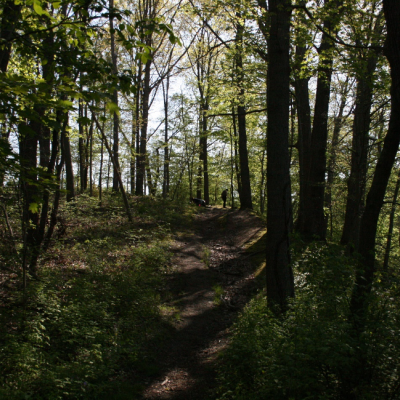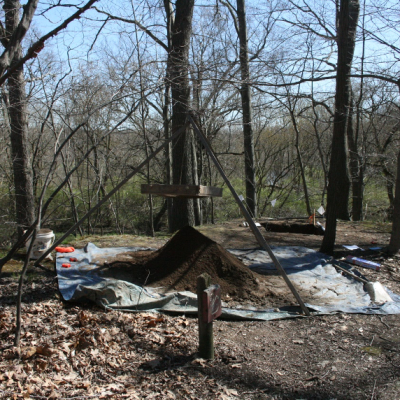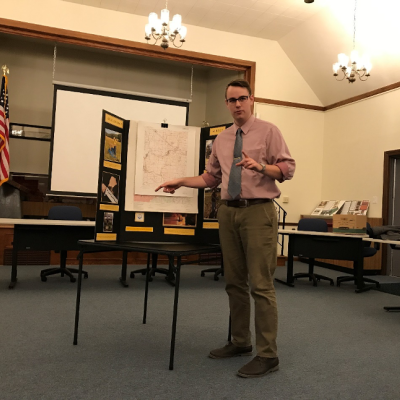SHiP partnered with the University of Akron Department of Anthropology, the Village of Silver Lake, and the Silver Lake Historical Society on this public archaeology program in Silver Lake Park. These excavations were funded, in part, by a Patricia Essenpries Grant from the Ohio Archaeological Council.
Test units were excavated in the park at two sites initially discovered along two hiking trails in the park. Both sites were first discovered in the spring of 2017 from runoff exposure on the existing Silver Lake Park trail that runs parallel to the Cuyahoga River. Volunteers assisted with the digging and sifting. The volunteers included students from the University of Akron, the Lippman School, and a few residents of the Village of Silver Lake.
The excavations at Silver Lake Sites I and II included two and three one by one meter test units, respectively. The Silver Lake Site I contained a substantial number of artifacts. The site consisted of 5,145.9 g of fire-cracked rock (“FCR”) (N =83), 75.5 g of debitage (N=100), 126.3 g of chert pebble cores (N=7), a 2.7 g Brewerton Side Notchedscraper, a 5.3 g Stanley Stemmedprojectile point, 3 projectile point tips (4.7 g), a 414.1 g nutting stone, 0.8 g of unidentified calcined animal bone fragments (N=19), 81.2 g of Late Woodland Cuyahoga Cordmarkedpottery (N=71), and a 13.6 g expedient scraper. The abundant FCR, heat damaged flakes, and calcined bone from Silver Lake Site I are likely the waste products from a fire pit located elsewhere on the site.
The Silver Lake site I (33 SU 639) likely served as a resource extraction camp, possibly representing a handful of re-occupations or even only a single occupation. It was likely used for nut harvesting and processing rather than deer processing. Using the fracture attribute analysis from Custer (2017) and Wilson and DeLyria (1999), the FCR are likely the result of stone boiling activities. The vegetation in the area is dominated by mixed oak forests including white, black, chestnut, and scarlet oaks (Forsyth 1970). At the Silver Lake I site, the ground is littered with thousands of acorns from White and Scarlet oaks that could have been easily harvested for nut oil, fat, and meat on an annual basis. Like the Stow Rockshelter (33 SU 642), the Silver Lake I site contains diagnostic artifacts from the Middle and Late Archaic, Late Woodland, and the Proto-Historic or Historic (the single musket ball) periods.
The Silver Lake II site did not yield a dense or diagnostic artifact scatter. There were 13 pieces of FCR (949 g). The lithic assemblage consisted of 4.7 g of flakes (N=11), 4.3 g of retouched flakes (N=2), 5.8 g of lithic shatter (N=3), and 106.7 g of chert pebble cores (N=4). The historic component consisted of 2 wire nails, a highly corroded nail, 2 corroded iron masses that could not be identified, and 1 undecorated whiteware rim sherd from a small plate. The soil profiles in the shovel test pits did not show any evidence of plow-scarring or disturbance aside from root stains. Likewise, there was little in the way of modern and historic debris, suggesting that the site has impeccable integrity for such an urban surrounding.
Prior to the public archaeology project, no archaeological sites were recorded in the Village of Silver Lake.



